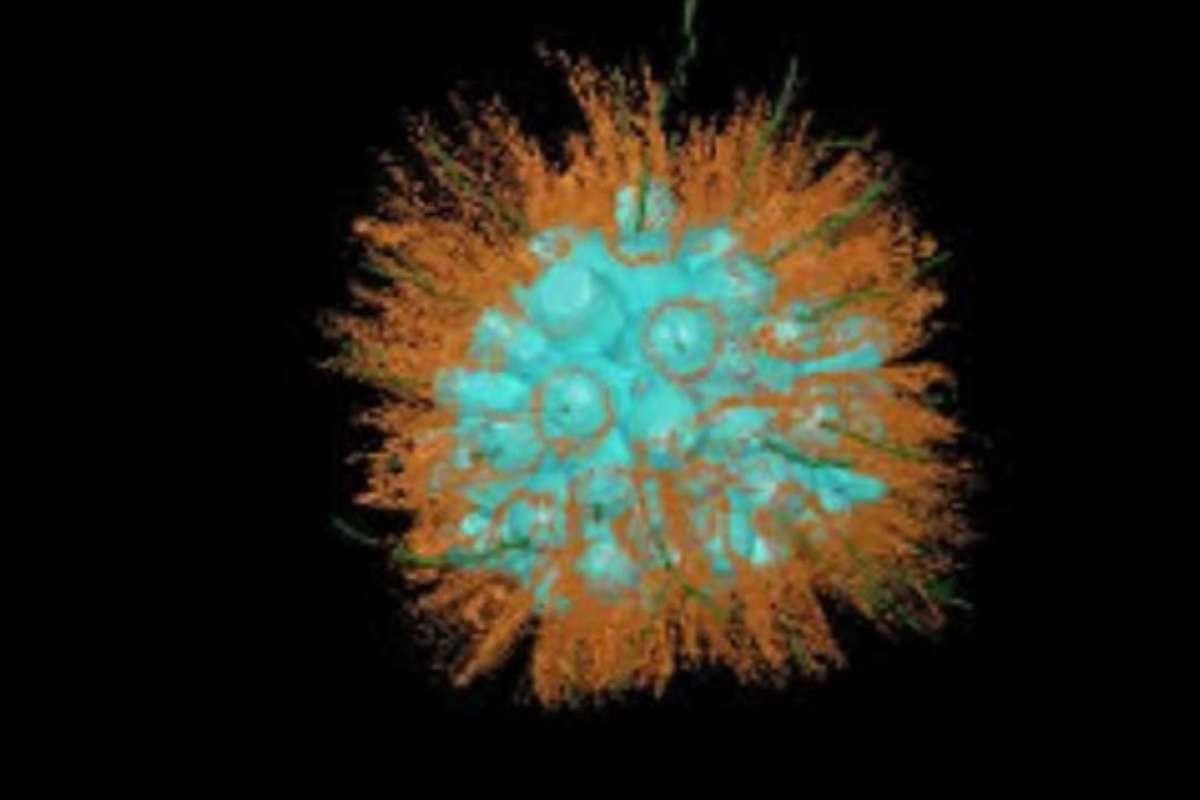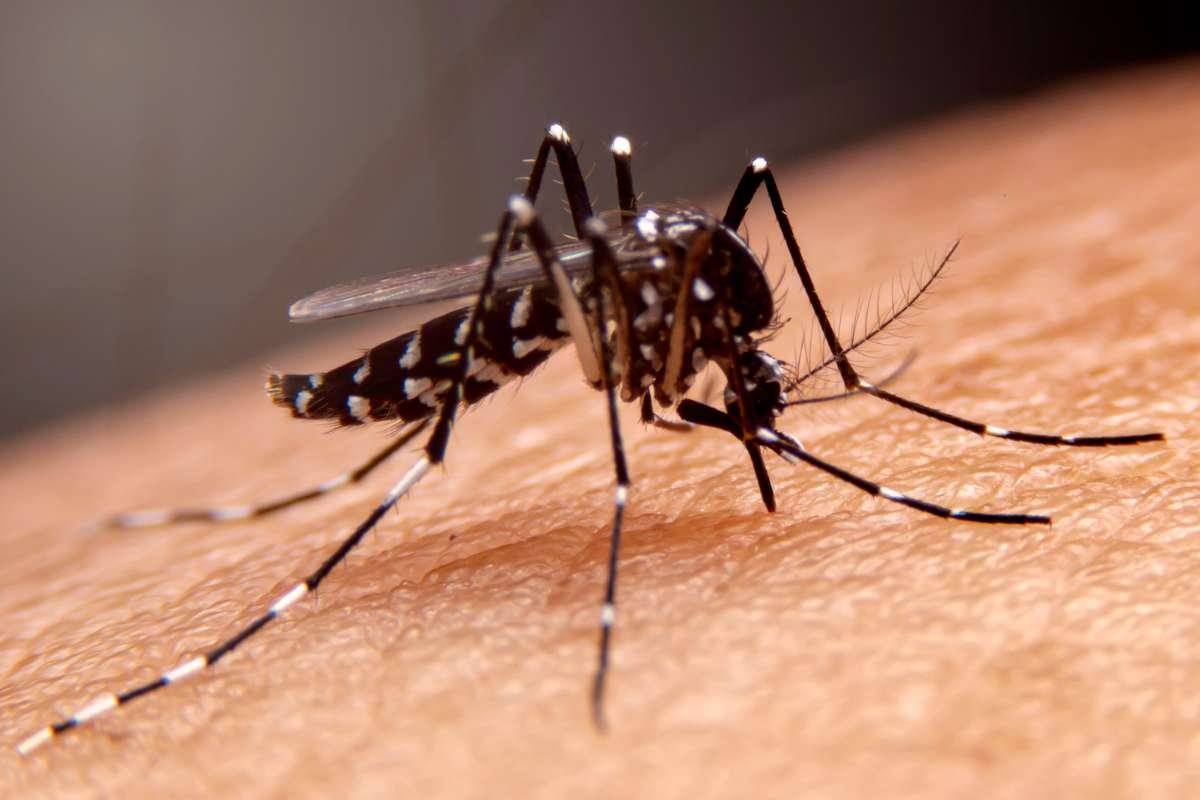Title: Mysterious Organism Discovered in Mono Lake Could Redefine Evolutionary History
Data Collection:
Researchers from the University of California, Berkeley, have identified a new choanoflagellate species in Mono Lake, an environment known for its extreme conditions. Located in the Eastern Sierra Nevada, Mono Lake’s highly alkaline waters, saturated with arsenic and cyanide, typically support only a few life forms, such as brine shrimp and alkali flies. However, this new species, found in the lake’s briny shallows, offers a unique glimpse into the early stages of life on Earth.
Development:
The discovered organism, named Barroeca monosierra, is a choanoflagellate, a single-celled life form that can divide and form multicellular colonies, similar to how animal embryos develop. While not classified as an animal, it is part of a sister group to all animals, making it the closest living relative to the first multicellular organisms. Unlike any other choanoflagellate known to date, Barroeca monosierra hosts a stable microbiome, maintaining a physical association with bacteria rather than merely consuming them. This discovery positions it as one of the simplest known organisms to possess a microbiome.
Key Features:
The significance of this discovery lies in its potential to shed light on the evolution of multicellular life. According to Nicole King, a UC Berkeley professor and Howard Hughes Medical Institute investigator, understanding choanoflagellates like Barroeca monosierra could provide insights into ancient ocean life and the interactions between early multicellular organisms and bacteria. These insights could help reconstruct the evolutionary timeline and clarify how complex relationships between organisms and microbes, like the human microbiome, first emerged.
Conclusion:
The discovery of Barroeca monosierra in Mono Lake opens new avenues for understanding the evolutionary leap from single-celled organisms to multicellular life. By studying this unique choanoflagellate, scientists may unlock the secrets of early life forms and their interactions with bacteria, which could redefine our understanding of the history of life on Earth.
Title: MIT Scientists Uncover Distinct Neuronal Timescales for Language Processing

Data Collection:
Researchers at MIT, led by neuroscientist Evelina Fedorenko, have identified clusters of neurons responsible for processing language with varying timescales using a method more precise than traditional functional magnetic resonance imaging (fMRI). Unlike fMRI, which measures brain activity based on changes in blood flow and lacks the resolution to observe individual neurons, this study utilized direct recordings of electrical activity from implanted electrodes. Initial data were drawn from six patients who underwent this invasive procedure for neurological conditions like epilepsy. Later, additional data were gathered from 16 more patients, enhancing the scope of the study.
Development:
The study involved analyzing brain responses while participants were exposed to different linguistic stimuli, including complete sentences, lists of words, non-words, and sentences composed of nonsensical words. The research revealed that neural activity varied depending on the type of linguistic input. For example, some neuron clusters showed activity building up over multiple words, while others responded to individual words. Researchers revisited these data with a new approach, examining the temporal response profiles of 539 language-responsive electrodes, to identify how neuronal populations process different lengths of linguistic context.
Key Features:
The study uncovered three distinct clusters of neurons within the language-processing areas of the brain, each with unique temporal windows. Some neurons processed language at the scale of a single word, while others integrated information across four or six words, indicating the complexity of the brain’s language network. This discovery, published in Nature Human Behavior, represents the first clear evidence of heterogeneity within these networks, challenging the assumption that language regions perform uniform functions.
Performance:
The study highlights that neural populations in language areas operate with different temporal windows, suggesting specialized roles in processing language. Neurons with shorter windows focus on individual word meanings, while those with longer windows interpret complex phrases. This differentiation has been missed in previous fMRI studies due to their lower resolution, which could not distinguish between these interleaved neural populations.
Significance:
These findings provide a clearer understanding of how the brain processes language, revealing that different neural populations are specialized for processing varying linguistic contexts. The discovery suggests a more complex internal structure within the brain’s language network than previously understood, opening avenues for further research in neuroscience and language processing.
Conclusion:
MIT neuroscientists have made a groundbreaking discovery by identifying distinct clusters of neurons that process language at different timescales. By utilizing direct electrical recordings, the study provides new insights into the brain’s intricate language network, revealing its diverse processing capabilities and challenging existing theories on neural activity in language comprehension.
Title: U.S. Cities Take Unprecedented Measures to Combat Rise in Mosquito-Borne Diseases

Data Collection:
Cities across the United States, including Massachusetts, New York, Texas, and California, are deploying chemical pesticides in response to a surge in deadly mosquito-borne illnesses. This move comes after an increase in cases of diseases such as West Nile Virus, Eastern Equine Encephalitis (EEE), and other lesser-known illnesses like “sloth fever.” For example, the West Nile Virus recently hospitalized Dr. Anthony Fauci, while EEE has resulted in two deaths this year. The pesticide application is carried out at night to minimize human exposure to potentially harmful chemicals, with doses kept at “ultra-low volume” to reduce health risks.
Development:
In Massachusetts, cities in southern Worcester County and Plymouth County are leading aggressive anti-mosquito campaigns following recent cases of EEE, including the state’s first human case since 2020. The Massachusetts Department of Public Health will use Anvil 10+10 pesticides sprayed from trucks and planes during overnight hours. Additional measures include voluntary curfews and park closures to limit mosquito exposure during peak hours. New York City, Arlington, and San Jose have launched similar initiatives to curb West Nile Virus, using pesticides like Anvil 10+10, Duet, MERUS 3, and Aqua-Reslin. New York City has reported six severe cases this year, while Texas has recorded 37 cases, the highest in the U.S., with one fatality. California has also seen fatalities, including one in Santa Clara County.
Key Features:
To prevent the spread of mosquito-borne diseases, U.S. cities are employing targeted spraying programs using pesticides such as Zenivex E4, Merus 3.0, and Aqua-Reslin, which are considered highly effective in controlling mosquito populations. These programs aim to minimize risks to public health by using ultra-low-volume sprays and conducting operations at night. The pesticide efforts are supplemented with additional public health measures, such as recommending residents to wear protective clothing and apply insect repellents, as advised by the Centers for Disease Control (CDC).
Performance:
Despite these interventions, cases of mosquito-borne diseases are on the rise in the U.S., driven partly by global temperature increases that allow mosquitoes to expand their range. For example, cases of Dengue Fever spiked by over 800% between 2021 and 2022. While most mosquito-borne illnesses are not fatal, they can cause severe illness in some individuals. The need for increased pesticide spraying and public health measures is expected to grow as the risk of mosquito-borne diseases continues to rise.
Significance:
The response by U.S. cities underscores the growing threat of mosquito-borne illnesses, which are becoming more prevalent due to environmental changes and other factors. The measures taken aim to reduce the spread of these diseases while balancing the risks associated with chemical pesticide use. As these efforts continue, public health officials stress the importance of personal protective measures to minimize exposure to mosquito bites.
Conclusion:
With the increasing risk of mosquito-borne illnesses in the U.S., cities are taking aggressive steps to combat the spread of diseases such as West Nile Virus and EEE. The combination of pesticide spraying, public health advisories, and community cooperation will be crucial in managing the situation. Residents are urged to follow CDC guidelines, such as using insect repellents and wearing protective clothing, to safeguard themselves against potential mosquito bites and reduce the risk of infection.
Title: Study Shows Lower Cardiovascular Complications from Myocarditis After COVID Vaccination Compared to Infection

Data Collection:
A recent study published in JAMA highlights that myocarditis, a condition involving inflammation of the heart muscle, is associated with fewer cardiovascular complications when it occurs after COVID-19 mRNA vaccination compared to post-COVID infection. Researchers analyzed data from the French National Health Data System, covering 4,635 residents aged 12 to 49 who were hospitalized for myocarditis between December 2020 and June 2022.
Development:
The study divided participants into three groups: those with post-vaccination myocarditis (12%), post-COVID myocarditis (6%), and conventional myocarditis (82%). It was found that myocarditis following COVID-19 vaccination generally led to fewer complications compared to myocarditis occurring after a COVID-19 infection. Post-vaccination myocarditis was more prevalent among younger males and was linked to fewer readmissions and lower rates of additional cardiovascular problems.
Key Features:
Key findings include that two-thirds of post-vaccine myocarditis cases occurred after the second dose of the vaccine, with patients in this group being younger and predominantly male. The follow-up revealed that 3.2% of post-vaccination myocarditis patients were readmitted for myopericarditis, compared to 4.0% of those with post-COVID myocarditis and 5.8% with conventional myocarditis. Furthermore, post-vaccination myocarditis was associated with lower hospitalization rates for other cardiovascular conditions and a lower rate of all-cause mortality.
Performance:
Patients with post-vaccination myocarditis experienced fewer hospital readmissions and lower rates of cardiovascular complications compared to those with conventional myocarditis or post-COVID myocarditis. Hospitalization rates for any cause were also lower in the post-vaccination group.
Significance:
This study underscores the relative safety of mRNA COVID-19 vaccines concerning myocarditis complications compared to the risks associated with COVID-19 infection itself. The findings highlight the effectiveness of vaccines in reducing severe outcomes and suggest that the overall impact of post-vaccine myocarditis is less severe than previously thought.
Conclusion:
While post-vaccination myocarditis leads to fewer cardiovascular issues compared to post-COVID myocarditis, patients, particularly young men, may still require ongoing medical management after discharge. The study advocates for continued monitoring and suggests that affected individuals refrain from competitive sports for 3 to 6 months.







